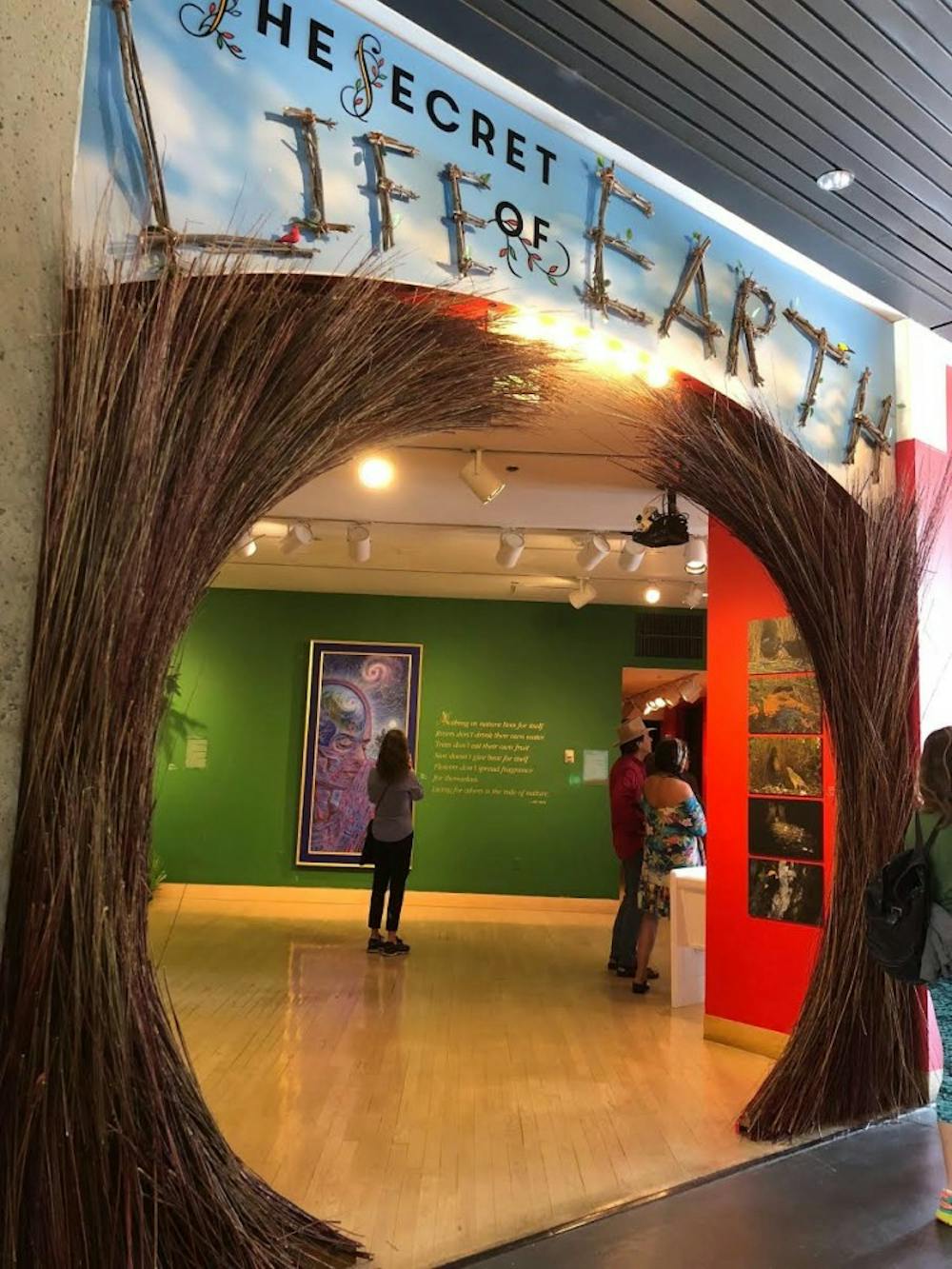Last weekend, the American Visionary Arts Museum (AVAM) premiered this year’s exhibit, “The Secret Life of Earth: Alive! Awake! (and Possibly Really Angry!)”. To those who do not know AVAM, the museum always highlights artists and work that go beyond the norm, using different and innovative mediums of art to reach the end goal of their exhibit: in this case, learning more about the earth in which we live and to love it more. AVAM did not fail to awe and surprise me with their most recent installation.
Visiting AVAM before the year starts has always been almost a tradition for me — at least for the two years I’ve been at Hopkins. I’ve only really had one experience at AVAM, when last year’s exhibit was near closing and the museum itself was in flux, in preparation for the next artistic exhibit.
This weekend was an entirely welcome change, with halls packed with museum-goers, as well as a full line to the door just to buy tickets. Specific artists featured within the exhibit even came in to explain their work to visitors. I find that this new vision of AVAM fits the energy of the museum better than before.
To provide a visual of the museum itself, the main building of AVAM is three floors, with a gorgeous glass shard mural adorning one half of the spherical building, large glass windows on the other. This allows the entrance ramp up to the main exhibit to not only be full of light, but allow the guest to never truly know what they are in for until they reach the top. This year’s exhibit, along with the theme of earthly activism, had the entrance hall covered in “floating” pieces of plastic that hung from the ceiling.
Adorned with alarming facts regarding the history of plastic, the entrance already hammers in the concept that we as a species have done something gravely wrong and unnatural.
If you skipped the first floor to reach the bulk of the artwork on the second floor, you would have missed one of my favorite aspects of this year’s artistic exhibit.
In the far back corner of each floor near the elevators is a wall filled to the brim with different kinds of paper flowers, giving the museum an awe-inducing splash of color. Each floor showcases different kinds of flowers, each intricately cut and placed. The work featured is by local Baltimore artist Erika Ezerskiene.
Another reason why I appreciate AVAM’s exhibits is that they spotlight engaging artists within the community that visitors could have otherwise not known about. Every corner of the museum has charm, and only through a close examination and thorough walk-through of the exhibits would you realize that.
Once you reach the second floor, if the theme of “The Secret Life of Earth” hasn’t exactly reached you yet, it better hit now.
Lining the stairs are impactful quotes regarding love for the Earth and importance of climate policy. The last step features young climate activist Greta Thunberg, who recently became incredibly famous due to her harsh and precise urging for new policies and real change regarding the climate crisis.
What draws your eye the moment you step in the room are the giant and green monkey sculptures dominating the corner. The color green pervades the entire room itself, and the monkey sculptures are quite intricate and sophisticated. Adorning the figures are dried natural plants, glass and wooden beads.
It’s not enough to say the entire installation was awe-inspiring — it was accompanied by a short blurb detailing the power of the color green.
“The human eye is hardwired to perceive more subtle variations in the color green than in any color,” the display read.
Throughout the rest of the rooms, even the smallest, most seemingly insignificant detail had value and worked with the other art pieces to critique current climate policy. Taken together, these works also exuded a profound love and respect for the earth, almost functioning as a love letter to the planet.
One hallway featured ominous pieces of eye-filled art detailing destruction from Hurricane Katrina. This collection was compiled from works by Christopher Moses, journal entries from Julia Butterfly Hill while she lived at the top of a tree for 738 days in an effort to protest the cutting down of a forest and a “cento” patchwork poem from a variety of prominent climate activists and Baltimore poets urging for the change of the status quo, calling for new, dyanmic climate policy and more love for the planet.
All of these conglomerate into a truly visionary exhibit that strives to define the climate issue through a diverse set of mediums and perspectives.
There was an interesting interaction between the temporary “Secret Life of Earth” exhibit and the permanent exhibit at the museum, which featured stories from the Holocaust and other refugees and survivors of mass genocide.
Despite the innovating and interesting pieces from the new exhibit, I thought that AVAM lost a vital opportunity to foreground the new issue of climate refugees. Countless populations are at dire risk of losing their homes and places of living. I would consider this an important upcoming facet in connection with the climate change issue. I also felt that this was something AVAM was remiss to not include as an interaction between the two exhibits.
Nevertheless, attending the new exhibit at AVAM was still an incredibly fulfilling visit, and one I would recommend to everyone.
There are currently heavily-discounted student tickets available. In addition, accessing the museum through the circulator or other forms of public transportation is incredibly easy; for example, the museum is only a short walk from one of the Charm City Circulator Purple line stops.
AVAM’s eccentric installations and interactive exhibits prove time and time again to be an engaging attraction for the Baltimore community and especially for Hopkins students.
And not to mention that there were monkeys. So that was REALLY cool. 11/10 would recommend.





